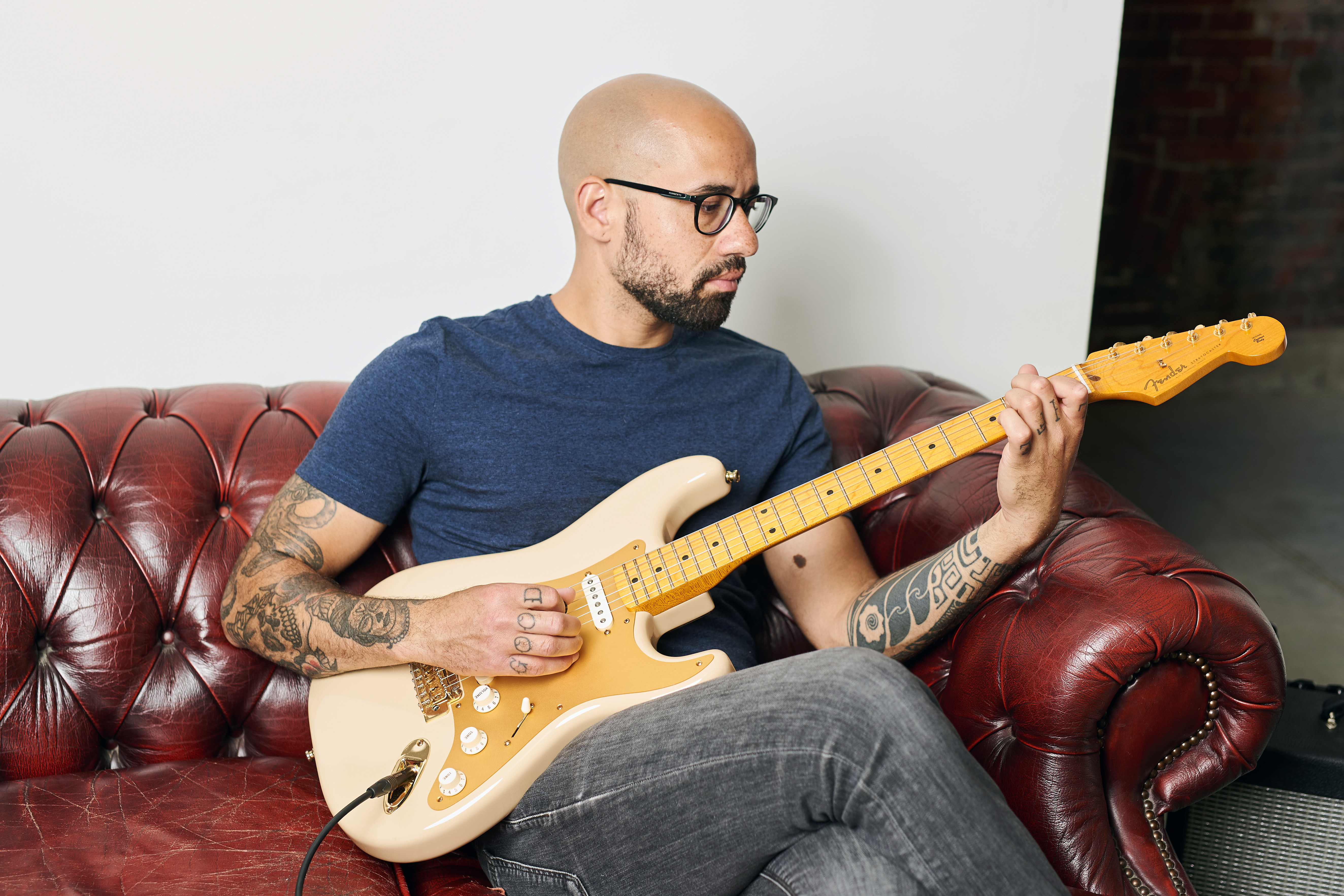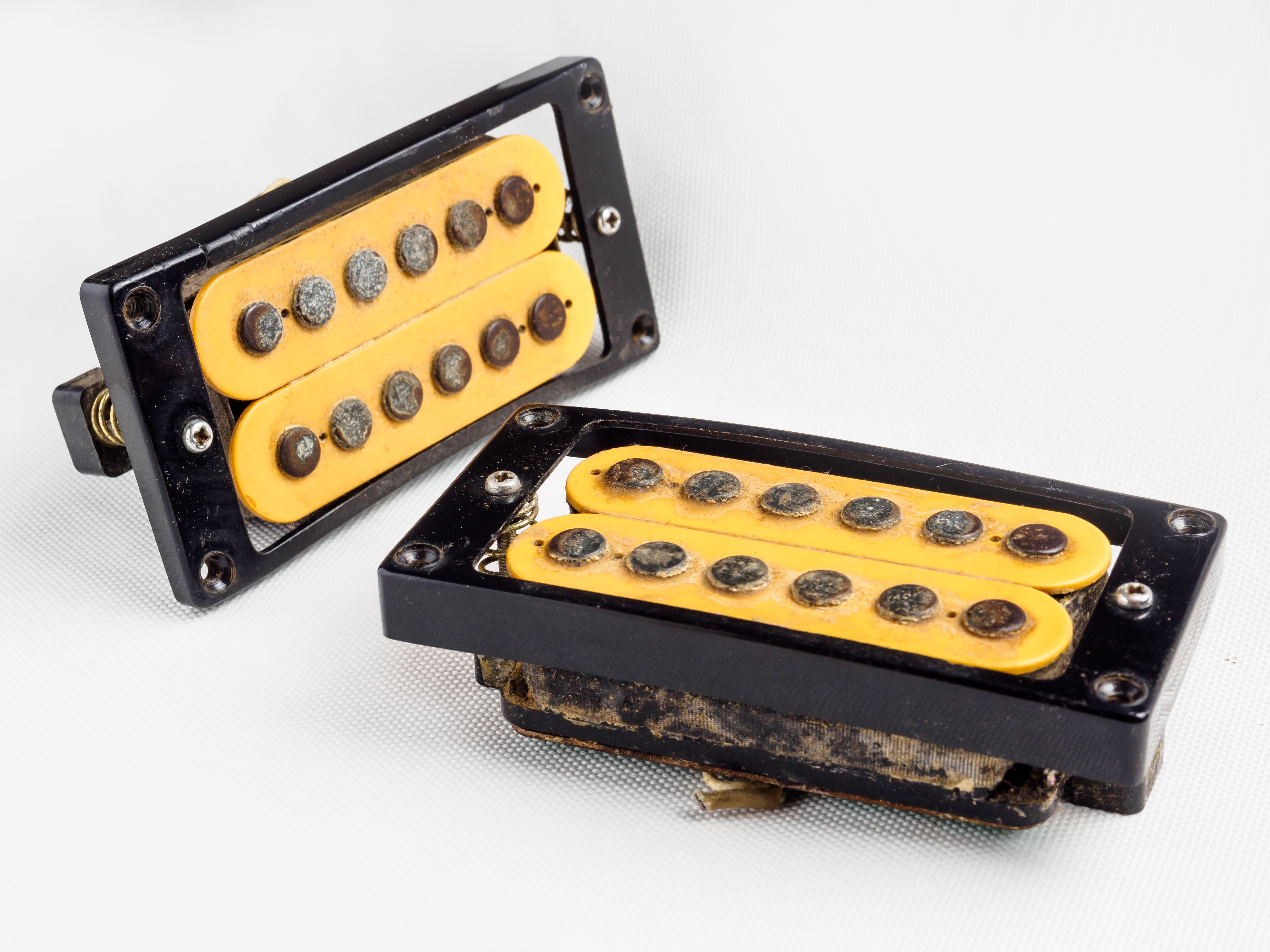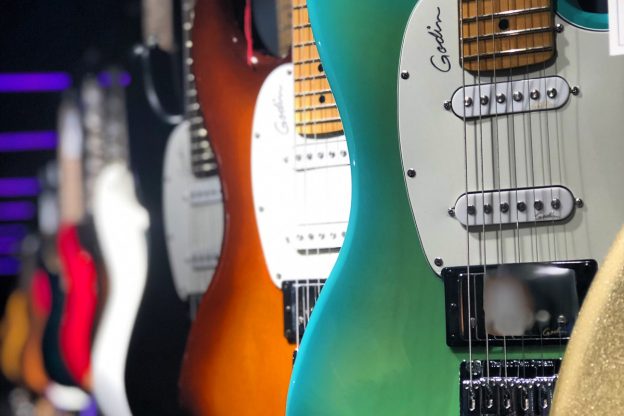Choosing a new electric guitar is a beginner’s first important step. After all, you’re at the advent of an infinite adventure. So, choose wisely, efficiently and make sure you ‘inform yourself before you wreck yourself.’ Just like in part one and two of this series we’ll focus on choosing your first guitar. In this case an electric six string.
An instrument is like a tool, so it’s important that you know what you want to use it for. It’s counterproductive, at the least, to use a sledge hammer to straighten out thin nails in a spongy wooden board. Just as demolishing a brick wall with a screwdriver is quite a challenge. As we’ll see learning to play guitar adheres to comparable rules. So, think carefully about what you want to learn and choose the instrument that best suits your needs.
Estimated reading time: 9 minutes
In this blog
Why an electric guitar?
Why choose an electric guitar at all? You can also tinker with and sing along to an acoustic specimen. Right? No. Well, to follow the ‘what suits your needs’ dictum; if you want this, then an acoustic instrument is for you. But that’s a story for another article.
So, what’s your incentive? Maybe you aspire to be the next Jimi Hendrix, Eric Clapton or Dimebag Darrell. Then this post is for you. We briefly explain how an electric guitar works, we’ll get you acquainted with the basic models and which brands are preferred by which genre. See this article as a convenient starting point for your search.
Difference between acoustic and electric guitars
There’s an obvious, yet essential difference between an acoustic six string and an electric six string. The first amplifies the strings’ vibrations through the hollow body of the guitar, that functions as a sound box. The latter’s functioning is a little more complicated.
An electric guitar has magnets attached to the body that pick up mechanical vibrations, which is why these parts are called pickups. They transmit the vibrations as an electrical signal through the guitar’s jack output, and via a cable into your amplifier. This whole process depends on electric power and signals. That’s why it’s called an electric guitar, and of course the sound is electrifying.

Sound
The sound of the electric guitar does not solely rely on power. Below we will discuss the other important factors that make up the sound. This will give you a good idea of what an electric guitar does and what you need to pay attention to when you choose one.
We’ll discuss the impact of the type of wood that is used to produce the body and neck. This is not as decisive as with an acoustic instrument, but it still plays an important role. Another factor to be aware of are the guitar’s pickups, which can alter the sound in different ways. And last but not least, of course, there are the different brands and models that match the sound of particular genres.
Body
Let’s start with the body. Different electric guitar models have different types of sound boxes. These are almost always made of wood. The type of wood is important when it comes to the weight of the instrument and the tone and color of the sound. For example, mahogany has a full and thick sound, but it’s fairly heavy in terms of weight. Essen wood is light and the sound is clear and higher than other woods. This way every type of wood has its own characteristics, as you can see here.
In addition to the material, it’s also important to note that there are three types of body shapes. The solid-body means that the sound box consists of a solid piece of wood. In contrast, a semi hollow-body has a small hollow space between the front and the back of the sound box, similar but slightly smaller than that of an acoustic guitar. In the case of the hollow-body this space is even larger. Both often have a carved-out F-shaped figure in order to enhance the resonation of the sound.

Single coils
The body of the guitar houses most of its electronics, i.e. the pickups, switches and wires. These are essentially copper-wound magnets that absorb vibrations of the strings, making it possible to amplify the sound. There’s many different pickup brands. But in the end, you can divide them all into two groups: single coils and humbuckers.
The single coils produce a clear and thin sound. They are often used in funk, blues and grunge. If you’re looking for that Jimi Hendrix sound, keep in mind that he mainly played on guitars with single coils. Also remember that the advantage of a thinner sound is that you can always make it thicker with effect pedals. The other way around is much more cumbersome.

Humbuckers
At first glance humbuckers look like two single coils that are glued together. That’s true to a certain extent, but because of the way they are wired, a humbucker is really one independent element and not two.You can test the different sounds by using the switch, also on the body, to alternate between the different pickups. Depending on the guitar, you can switch both single coils on at the same time or one at a time. Compare the sound with that of a humbucker.
The humbucker sound is thicker and fuller than a single coils’. This makes it ideal for heavier genres like rock, hard rock and metal. From Slash to Dimebag Darrell, humbuckers all the way. Do you like John Mayer? Than you shouldn’t pick a guitar with humbuckers.

Stratocaster
John Mayer plays – just like Eric Clapton, Bob Dylan and Jimi Hendrix – on a Fender Stratocaster. This is one of the most iconic models. It’s probably the first model you think of when you try to picture an electric guitar.
The instrument is classically equipped with a solid-body and three single coils, although some deviant versions are equipped with humbuckers. It has twenty-one frets, two tone controls, one master volume and a pickup switch. Want a bluesy, funky sound? Then this is your guitar. It has a typical screeching sound that’s still recognizable when you thicken it with effects.
Les Paul
Just like the Stratocaster, Gibson’s Les Paul model is a classic. It’s a solid-body equipped with two humbuckers, two tone controls, two volume buttons and a three-way pickup switch. You can send the signal through the upper, lower or both humbuckers.
You could say that the Les Paul is exactly on the other side of the spectrum, opposite the Stratocaster. A Les Paul model has a heavy, full and deep sound and is also heavier in terms of physical weight. Not that fitting when you want to play crystal clear tunes, because they sound a bit woolly. But, it’s perfect for heavy riffs, full chords and thick solos. Slash, Zakk Wylde, Lenny Kravitz and Jimmy Page use this monster for good reasons.
Streamliner
To reproduce that ol’ growling rock ‘n roll sound of Chuck Berry, or the fine sound of Chet Atkins, you need a hollow-body. Gretsch’s Streamliner is one of the best-known guitars in this category. The humbuckers give a specific heavy sound, but the high tones are a bit slenderer.
This guitar model also lends itself to blues. It’s for good reasons that Bo Diddley usually played on a Gretsch Streamline. The ‘king of rock ‘n roll’, Mr. Presley, was also fond of it. So, if you love that nice vintage sound, check out the hollow-body models.
Artcore electric guitar
Ibanez is known for its heavy solid-body guitars, which are often used in the metal genre. But the guitar manufacturer also made the semi-hollow Artcore in the seventies. Together with Gibson’s ES-335 this is one of the most famous semi hollow-body guitars.
These guitars are perfect for country, blues and fusion. You can use it in any direction you want. The sound is full of crisp and clear mid-tones. This allows you to combine the warm and full characteristic of the hollow body with the tight sounds of the solid-body. These guitars are often equipped with humbuckers.
Many others
To keep it simple we will not go into too much detail, lest we deliver you a headache. The models discussed in this article constitute the basic designs for the various other electric guitars that came after. Still, we can’t ignore a number of other varieties of the electric six string.
If you’re a real metal head it pays to immerse yourself in brands like B.C. Rich and Dean, besides Ibanez and Gibson of course. As a rocker you should also check the Jaguar and Telecaster models from Fender. Gibson’s SG series are also a must to try out in a music store, it’s the favorite guitar of both Angus Young and Tony Iommi.

Choices, choices, choices
We understand, you read all this and think, “What is it all about? I just want to play on a good and not too expensive guitar. Just give me some concrete brands! It would be really nice to be able to do that, but as you might suspect it will not happen.
You have to work out for yourself what guitar fits your needs. For a cheaper alternative you can also look at what brands offer good copies of the more expensive ones that were mentioned above. Don’t buy a far too expensive Fender right away and never play on it!
Walk into a music store and start trying one guitar after another with this basic knowledge. Take your time with it, because the better your choice, the longer you’ll enjoy it. As with everything else in life, the following applies: ‘proper preparation prevents poor performance’. Happy jamming!
Teo creates content, which means he writes, a lot, about music, and all things interesting. When it comes to jamming, his weapon of choice is the bass guitar.



